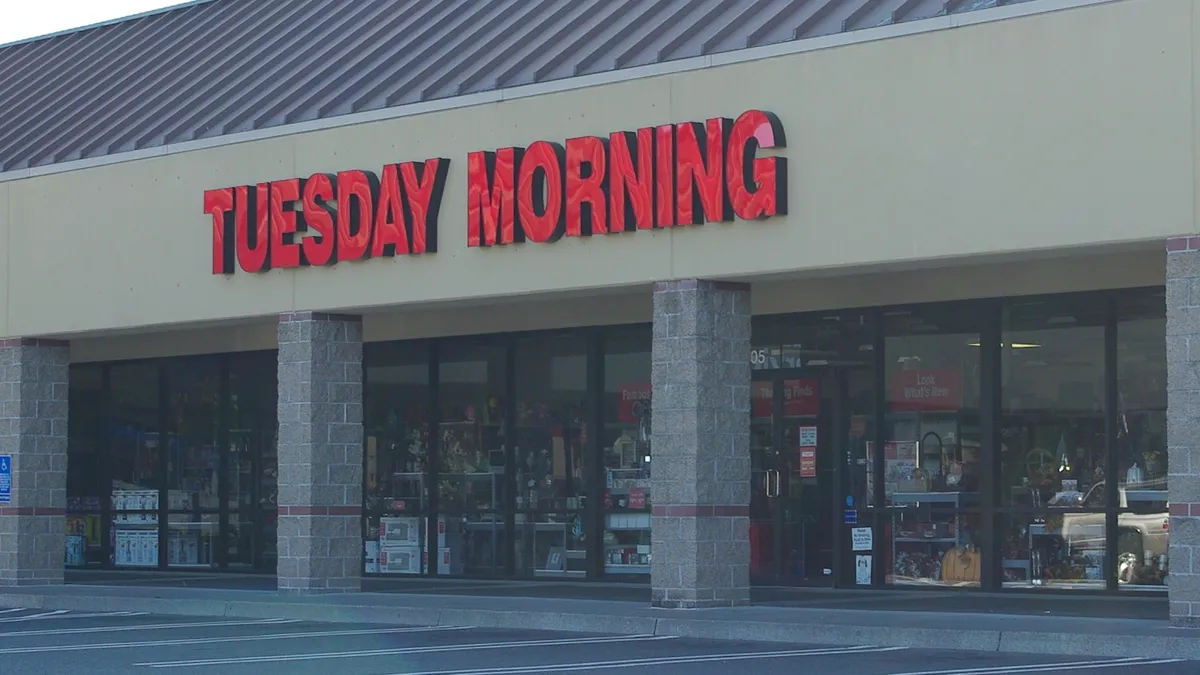Dive Brief:
- Tuesday Morning has exited Chapter 11 bankruptcy with new debt financing and a planned rights offering for shareholders, the company said in a press release Monday.
- The off-price retailer leaves bankruptcy with a footprint of 490 stores, down from the 687 stores it operated when it filed for bankruptcy last May.
- Supporting its exit is a $110 million lending facility backed by J.P. Morgan, Wells Fargo and Bank of America. It also plans a rights offering worth $40 million available to current shareholders and investment firm Osmium Partners, according to securities filings.
Dive Insight:
Tuesday Morning was losing money going into 2020 and all the turbulence the year brought. The pandemic, for the small (relative to its off-price peers) retailer, meant the near-total collapse of revenue.
Founded by Lloyd Ross in the mid-1970s, just a few years before the first T.J. Maxx opened, the company helped pioneer the modern off-price model when it filled a Dallas warehouse with leftover inventory from brands and retailers and invited the public to shop its discount prices.
In its early life, the company went from its first permanent store to 60 locations in the space of five years. Over the decades following, it went public, was taken private, and went public again, all while growing. By 2018, it made some $1 billion in sales and ran 700 locations. Today its stores are based mainly in Texas, Florida, California, Virginia, Georgia and North Carolina.
In recent years, Tuesday Morning lost money on its operations and posted weak sales growth as it tried to compete against off-price juggernauts TJX Cos. and Ross Stores. Its stores lacked coherence and compelling "treasures" for the off-price treasure hunt experience, according to GlobalData analysts, who described Tuesday Morning stores last year as "a jumbled flea market of whatever buyers could seemingly get their hands on."
Unlike many bankruptcy reorganizations, shareholders kept their financial stakes in Tuesday Morning through its Chapter 11 reorganization and had the chance to invest in the company through the rights offering. The reorganization comes after the retailer floated a potential sale of itself in bankruptcy but ultimately opted to go forward on its own.
CEO Steve Becker said in the release that the company "worked diligently with our advisors to craft a plan of reorganization that paid our vendor claims in full while protecting our shareholders." He also framed the Chapter 11 exit as an opportunity for long-term growth. "We have emerged with a streamlined operating model, and are well-positioned to execute on our strategy," he said.
But challenges remain, as does the pandemic that helped send it into Chapter 11. For the period ending Sept. 30, its sales remained nearly 28% down from 2019 levels while operating losses nearly doubled. Net cash flow remained negative through October and November, according to operating reports filed in bankruptcy court.















